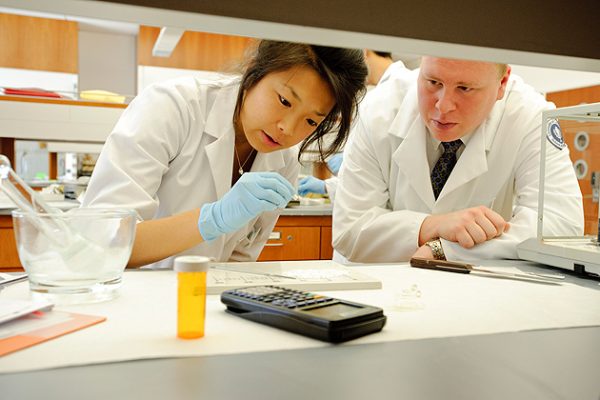To become a pharmacist, you must first complete a Doctor of Pharmacy, or PharmD, degree, not to be confused with a Ph.D. in pharmacy.
This professional degree program features a rigorous curriculum that is loaded in biological and chemical sciences. Students who wish to be admitted to pharmacy school must prepare by taking the right undergraduate courses and achieving the highest grade-point average possible. Students with the best academic credentials will have a better chance of being admitted to the top schools, which can lead to the best career prospects.
Step 1
Research on pharmacy programs to ascertain which might be best suited to your research interests and your academic needs. Study what the requirements are for each program and what the statistics are for the incoming class, such as grades and test scores.
Step 2
Take the required pre-pharmacy courses as an undergraduate student. These courses differ for each pharmacy school, but the requirements are similar. For example, the University of Southern California requires applicants to complete one semester each of calculus, statistics, physics with lab, microbiology, human physiology, molecular or cellular biology, biochemistry, psychology or sociology, microeconomics, and communication, as well as two semesters each of general chemistry with labs, organic chemistry with labs, general biology with labs, and English composition. The University of Maryland requires one semester each of English composition, calculus, statistics, biology with lab, and microbiology with lab; two semesters each of general chemistry with labs, organic chemistry with labs, physics, and human anatomy and physiology; four to six semesters in the humanities and social sciences; and one class each in speech or public speaking and microeconomics.
Step 3
Work hard to get good grades. Most pharmacy programs have minimum GPA requirements for admissions. At USC, students must have a minimum 3.0 GPA, as well as earn a C or better in all pre-requisite courses. At the University of California San Francisco, students must have a minimum 2.8 GPA. Generally speaking, the higher the GPA, the better chance students have of getting into their desired program.
Step 4
Take the Pharmacy College Admission Test, or PCAT. The test is not required for all pharmacy programs, but many do require it. At Auburn University, students must score in the 40th percentile or higher to be considered for admission. Samford University has the same standard. Since percentiles are based on a comparison of other test takers, exact scores vary from year to year.
Step 5
Get great letters of recommendation. Your former professors and work supervisors can confirm to the quality of work you do and your dedication. This is important information for an admissions committee. If you can get stellar letters of recommendation from important people in the field who also know you and your work well, you may be able to improve your chances of being admitted.
Step 6
Get some work experience. You may be able to qualify for a pharmaceutical internship as an undergraduate student. However, if you do not, you can look for work in other scientific fields, such as a lab assistant. Your work experience exhibits your dedication to the field, and it gives you a unique perspective that can add diversity to the incoming class.
Tip
Apply to several schools to increase your chances of admission. Choose a couple of “safety schools” that seem like sure bets based on your grades and test scores, and choose a couple of “dream schools” that may have more strict admissions guidelines.
Warning
Some programs require a criminal background check or drug testing to be admitted or to work in clinical facilities. Be sure you can pass such checks before applying.

